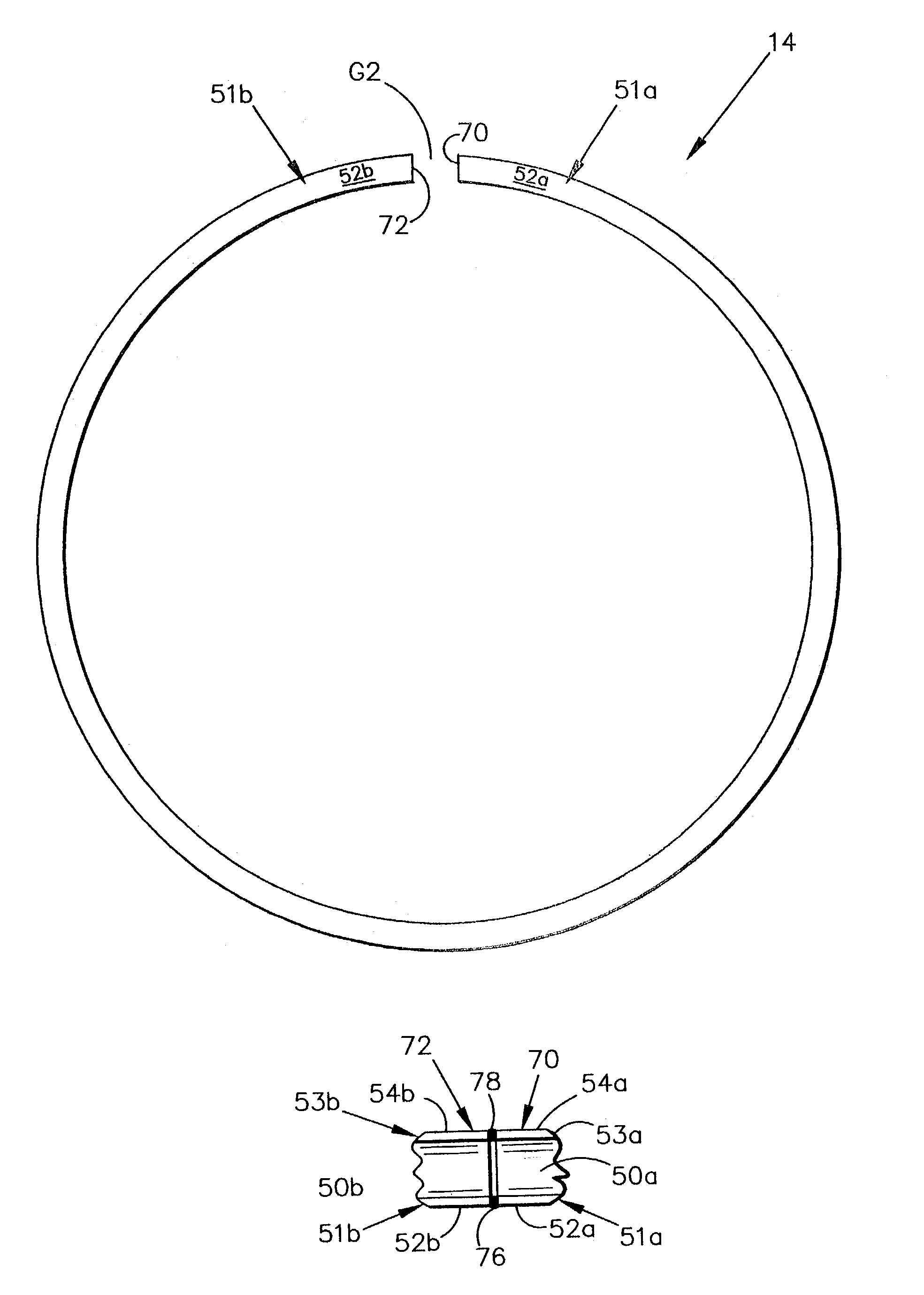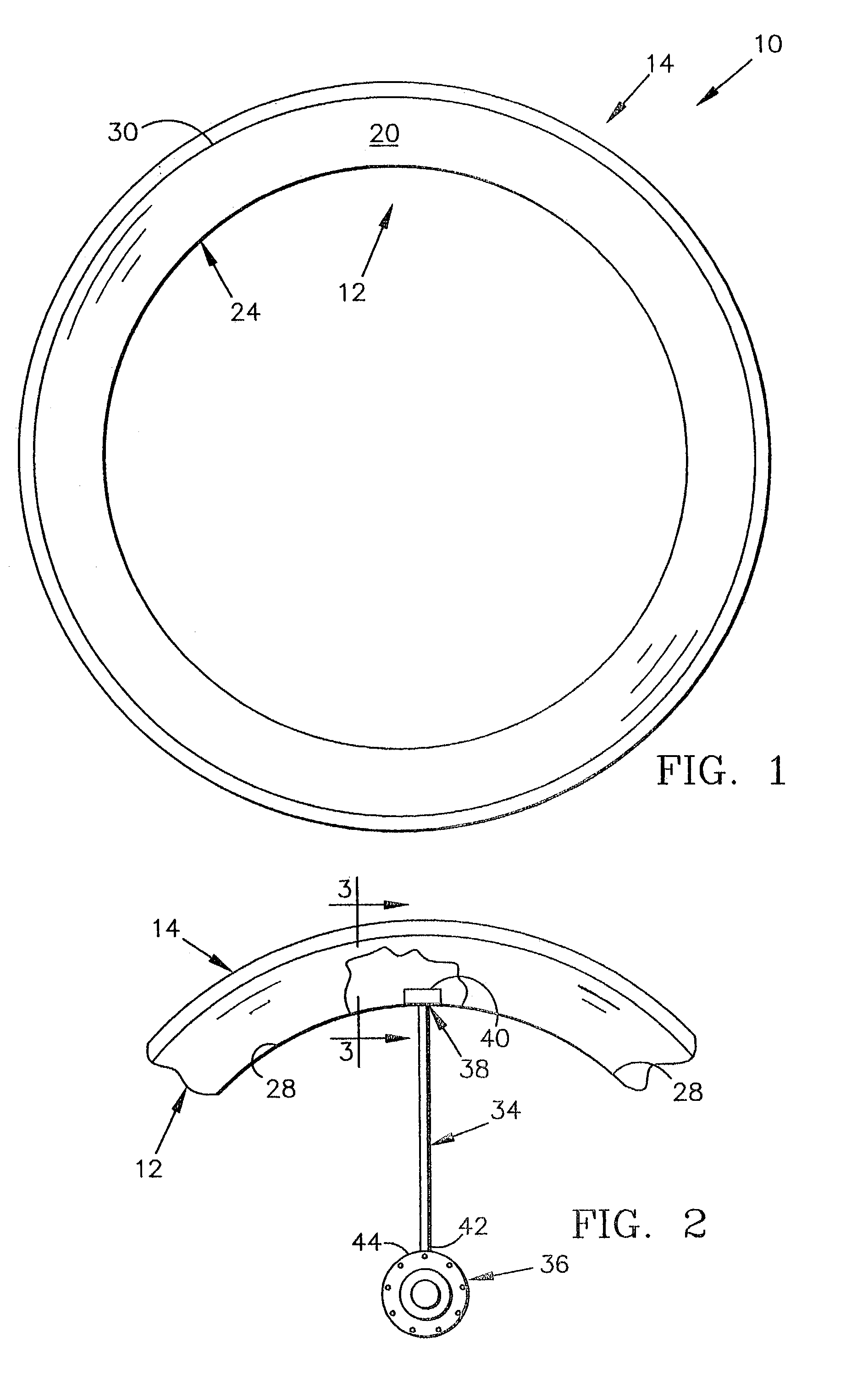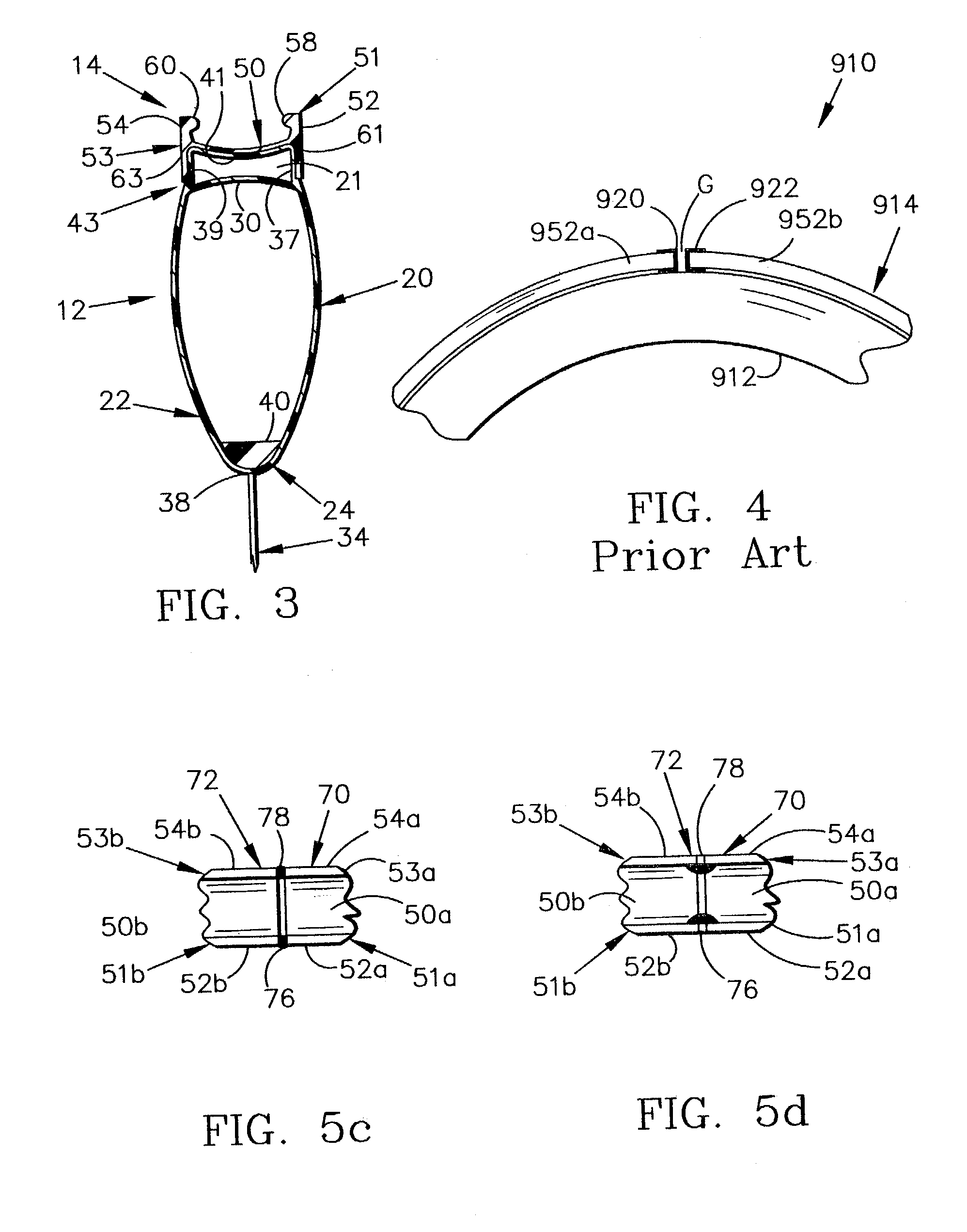Composite bicycle rim with seamless braking surface
a technology of bicycle rims and braking surfaces, which is applied in the field of rims, can solve the problems of difficult to form a full frp composite fiber rim that will accept standard beaded bicycle tires, manufacturing hoop, and inconvenient use of bicycle rims made entirely of frp composites, so as to reduce braking performance, increase the gap, and ensure the effect of braking
- Summary
- Abstract
- Description
- Claims
- Application Information
AI Technical Summary
Benefits of technology
Problems solved by technology
Method used
Image
Examples
Embodiment Construction
[0029]A fiber reinforced plastic (FRP) based bicycle rim 10 of the present invention is shown in the figures, as being comprised of two primary components, a carbon fiber body 12, that is circumferentially surrounded by an aluminum metal tire receiving ring 14. The tire receiving ring 14 is adapted for receiving the beads of a conventional tire, such as is disclosed in more detail in Sargent U.S. Pat. No. 6,975,645, the disclosure of which is incorporated by reference herein. As best shown in FIG. 3, the FRP body 12 includes a first bulbous side wall portion 20, and a second bulbous side wall portion 22 which is formed as a mirror image of the first bulbous side wall portion 20. The side wall portions 20, 24 have a significant radially extent in order to provide desirable aerodynamic properties to the rim. A cross member 30 extends between the two side walls 20, 22 and defines a cavity 21 into which a foam is placed. The foam, which fills cavity 21, serves as a core over which sheet...
PUM
| Property | Measurement | Unit |
|---|---|---|
| thick | aaaaa | aaaaa |
| thick | aaaaa | aaaaa |
| temperatures | aaaaa | aaaaa |
Abstract
Description
Claims
Application Information
 Login to View More
Login to View More - R&D
- Intellectual Property
- Life Sciences
- Materials
- Tech Scout
- Unparalleled Data Quality
- Higher Quality Content
- 60% Fewer Hallucinations
Browse by: Latest US Patents, China's latest patents, Technical Efficacy Thesaurus, Application Domain, Technology Topic, Popular Technical Reports.
© 2025 PatSnap. All rights reserved.Legal|Privacy policy|Modern Slavery Act Transparency Statement|Sitemap|About US| Contact US: help@patsnap.com



